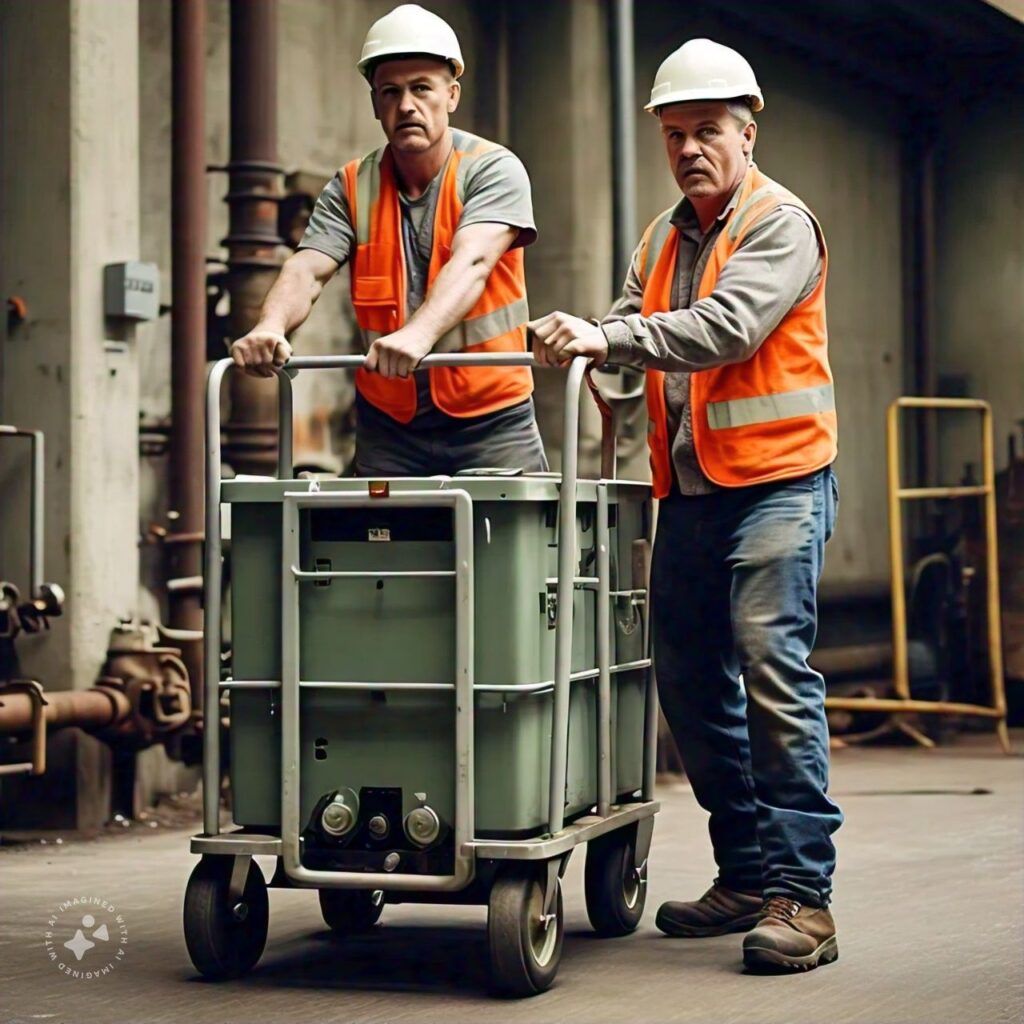In today’s technologically driven world, the demand for portable power solutions has surged. From military operations to large-scale events and construction sites, the need to transport and manage power sources efficiently is critical. One practical solution to this challenge is the two-man battery carrier, an essential piece of equipment designed to facilitate the safe and effective transport of heavy-duty batteries.
Design and Structure
A two-man battery carrier is engineered to carry large, often heavy batteries, which are commonly used in various applications such as military equipment, industrial machinery, and backup power systems. The design of these carriers focuses on ergonomics, safety, and functionality to ensure that users can transport batteries with minimal strain and risk.
Typically, a two-man battery carrier consists of a sturdy frame, often made from steel or aluminum, which provides the necessary support and strength to handle the weight of the battery. The carrier includes padded handles or grips on either side, allowing two individuals to lift and maneuver the unit with ease. Some models also feature adjustable straps or securing mechanisms to hold the battery in place during transportation.
Key Features and Benefits
- Enhanced Safety: One of the primary advantages of a two-man battery carrier is the improved safety it offers. Large batteries can be cumbersome and pose a risk of injury if not handled properly. By distributing the weight between two individuals, the risk of accidents such as dropping or straining is significantly reduced. The carrier’s design often includes features such as non-slip grips and reinforced padding to further enhance safety.
- Increased Efficiency: The two-man battery carrier streamlines the process of transporting heavy batteries, making it more efficient and less time-consuming. Instead of using forklifts or cranes, which may not always be readily available or suitable for all environments, the carrier allows for manual handling with greater control and precision.
- Ergonomic Design: The ergonomic design of these carriers minimizes physical strain on users. By providing handles that are positioned to ensure optimal balance and leverage, the carrier helps prevent back injuries and other musculoskeletal issues that can arise from improper lifting techniques.
- Versatility: Two-man battery carriers are versatile tools suitable for a variety of applications. They can be used in settings ranging from military operations, where quick and reliable power sources are crucial, to construction sites and event management, where managing power supply is often a logistical challenge.
- Durability and Strength: Given the heavy-duty nature of the batteries they are designed to carry, two-man battery carriers are built to withstand significant wear and tear. They are constructed from high-strength materials that ensure longevity and reliability even under demanding conditions.
Applications and Use Cases
- Military Operations: In military settings, power is crucial for communication, navigation, and operational equipment. Two-man battery carriers are employed to transport batteries to various locations, ensuring that critical equipment remains operational. The carrier’s design allows for swift deployment and relocation of power sources, which is essential in fast-paced and dynamic environments.
- Construction Sites: Construction sites often require portable power solutions for tools and machinery. Two-man battery carriers facilitate the efficient movement of large batteries that power these devices, reducing downtime and improving productivity. The carrier’s durability also makes it suitable for rugged construction environments.
- Events and Festivals: Large-scale events and festivals frequently rely on portable power to support lighting, sound systems, and other equipment. Two-man battery carriers are used to transport and manage the batteries that provide this power, ensuring smooth operations and minimizing disruptions.
- Industrial Applications: In various industrial settings, batteries are used to power equipment and machinery. Two-man battery carriers are instrumental in moving these batteries within manufacturing facilities, warehouses, and other industrial locations, contributing to the overall efficiency of operations.
Challenges and Considerations
While two-man battery carriers offer numerous benefits, there are also challenges and considerations to keep in mind:
- Size and Weight Limitations: The size and weight of the batteries that can be effectively transported using a two-man carrier are limited by the carrier’s design. For extremely large or heavy batteries, specialized equipment may be required.
- Maintenance and Care: Regular maintenance of the battery carrier is essential to ensure its longevity and proper functioning. Users must inspect the carrier for any signs of wear or damage and address any issues promptly to avoid potential problems.
- Training and Usage: Proper training is necessary for individuals using the two-man battery carrier to ensure that it is handled correctly. Misuse or improper handling can negate the safety and efficiency benefits of the carrier.
Conclusion
The two-man battery carrier is a vital tool in the efficient and safe management of heavy batteries. Its ergonomic design, durability, and versatility make it an invaluable asset in various settings, from military operations to industrial applications. By addressing the challenges associated with battery transportation and leveraging the carrier’s benefits, users can ensure that their power management needs are met effectively and safely. As technology continues to advance and the demand for portable power solutions grows, the role of the two-man battery carrier remains crucial in supporting efficient and reliable power distribution across diverse environments.

